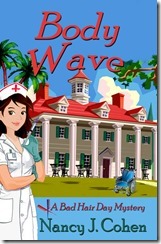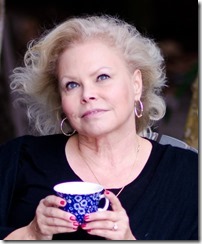By

Randy Ingermanson AKA the Snowflake Guy
Brilliant people understand complex concepts. But, despite their superior intelligence, they often cannot explain those concepts to less-than-brilliant folks.
But Randy Ingermanson can. He’s brilliant but he has a simple way of breaking down the incomprehensible so we mere mortals understand what he’s talking about.
For those who don’t know Randy, he has a PhD in physics specializing in elementary particle theory. According to the bio on his website: “Most of my work was in nonperturbative methods in quantum field theory.”
Did that lose you? Yeah, me too.
When I Googled nonperturbative, I recognized three words in the definition: cannot be described. That’s for sure!
Yet…Randy, in his spare time, became a successful author of fiction and nonfiction as well as a sought-after writing instructor. His two-book Snowflake series and Writing Fiction for Dummies still remain in the top 100 writing reference books on Amazon many years after they were published.
Randy has the extraordinary ability to break down complex writing concepts into easily digestible bites. In addition, his step-by-step plan of action template helps writers track and accomplish their goals.
Randy graciously agreed to chat with us here on TKZ. Welcome, Randy!
Debbie Burke: Your day job as a physicist requires a lot of brain energy. You also keep up the Advanced Fiction Writing blog and write bestselling craft books. Plus you write multiple fiction series, some involving extensive historical research, including archaeological digs. And you have a family. Do you ever sleep?
Joking aside, your ability to juggle multiple projects is impressive. Can you share some hints on how you manage your time and prioritize tasks?
Randy Ingermanson: For a big chunk of my life, I didn’t manage my time very well. I took on too many things and then felt really stressed. But things began to change about 15 years ago when I read David Allen’s classic book Getting Things Done. I realized that I was doing things badly, and that’s the first step to doing things better.
One key thing I’ve learned is that sometimes you just have to prune things out of your life. That’s very hard, but over the last several years, I’ve cut back several parts of my life that I thought were essential. And nobody died. I have a theory that everyone has a set limit to the number of main projects they can juggle. My limit is three. Some people can do four, and I admire them to death, but I can’t do it.
Another key thing I’ve learned is that it’s OK to have a hundred things on your To-Do List, as long as they’re not all visible right now. So I have a cascading sequence of To-Do Lists, one for “Someday”, one for “This Year,” “This Quarter,” This Month,” “This Week,” and “Today.” Every Sunday, I review the lists and promote some tasks from “This Month” to “This Week”. Every day, I choose things from “This Week” to put on the “Today” list. The beauty of this is that a day is a success if I knock off all the things on the Today list. I only have to look at those 15 items and decide which to do next. I don’t have to look at the dozens or hundreds on This Week or This Month or This Year. Those will all get done in due time, but the name of the game is to not be overwhelmed. When you get overwhelmed, your brain goes into panic mode, you spend all day spinning your wheels, and you end up eating all the Haagen-Dazs.
I use a nifty method called “Kanban” to manage my tasks. (This is very popular among software developers.) There are a bunch of websites that let you set up Kanban projects. The one I use is at Kanbanflow.com, and it works for me. But I recommend that people always use a tool that resonates with them.
DB: Writing a novel is a hard project. You have a wonderfully workable system for how to tackle hard projects. Can you explain the steps in that system?
RI: I wrote a blog post awhile back on the general problem of managing any hard project. I’ll refer your readers to that post here: https://www.advancedfictionwriting.com/blog/2021/01/21/how-to-make-an-action-plan/
 I’ve gotten extremely famous for my system for managing one particular hard project—writing the first draft of your novel. The “Snowflake Method” will probably be listed on my headstone. It’s a ten-step method I use for writing my first draft. I wrote out the ten steps back around 2002 in answer to a question somebody asked in an online writing group I was on. And some people liked the idea enough that I posted it on my website. And then it just took off. It’s now been viewed more than 6 million times and has earned me a ridiculous amount of money.
I’ve gotten extremely famous for my system for managing one particular hard project—writing the first draft of your novel. The “Snowflake Method” will probably be listed on my headstone. It’s a ten-step method I use for writing my first draft. I wrote out the ten steps back around 2002 in answer to a question somebody asked in an online writing group I was on. And some people liked the idea enough that I posted it on my website. And then it just took off. It’s now been viewed more than 6 million times and has earned me a ridiculous amount of money.
The core idea is that you design a novel before you write it. Some people hate this idea and would rather just write by the seat of their pants. That’s fine by me. Different people are wired different in the brain, and it doesn’t matter how you get your first draft down on paper. We all can respect each other and recognize that we don’t all think alike. The Snowflake Method happens to work well for about a third of the writing population.
You start by taking an hour to write down a summary sentence for your story. This will be your selling tool forever, so it makes sense to take a little time to do it. But don’t spend weeks obsessing on this. Write down your best one-sentence summary for now and then move on to the next step. You can always come back and improve it later. In fact, you certainly will.
 The Snowflake Method has another nine steps, and I don’t have space to even summarize them here. But anyone can Google “Snowflake Method” and find my 3000-word web article or my 50,000 word book on the subject. If you like to know approximately where you’re going before you start writing, then the Snowflake Method is designed for you. If you don’t, then it’s not for you.
The Snowflake Method has another nine steps, and I don’t have space to even summarize them here. But anyone can Google “Snowflake Method” and find my 3000-word web article or my 50,000 word book on the subject. If you like to know approximately where you’re going before you start writing, then the Snowflake Method is designed for you. If you don’t, then it’s not for you.
DB: Most authors dread marketing. What do you recommend as the most important marketing tools for a writer?
RI: I used to hate marketing. In fact, I remember the day I told an agent friend of mine, “I hate marketing! I’m a terrible marketer, and I don’t ever want to have to market my books again!” She got a panicky look on her face and told me not to say such things out loud, because the walls have ears. And she was right.
I now believe there are three main keys to good marketing for a novelist. I call them the Three Rings of Power. They are:
- Your website
- Your email newsletter
- Paid advertising
Your website is important because you own it. Social media is notoriously fickle, and any social media platform can suddenly become unusable, for a variety of reasons. Various platforms can ban you, or go out of fashion, or start charging you. But you own your website and it’s very hard to take it away from you.
Ditto for your email newsletter. If you have a newsletter with 5000 loyal readers who know you and actually read what you send, you have a guaranteed bestseller, every time you launch a book. That’s gold.
Paid advertising is now just a fact of life. None of us like paying for ads, but they work. If you use Amazon ads and Facebook ads and BookBub ads and the various book promo sites effectively, you can move copies with a positive return-on-investment. I think TikTok will soon join this short list of paid-ad opportunities that authors routinely use.
So the Three Rings of Power are great, and I personally have done extremely well using them. However …
However, a lot of authors don’t see a good return on their investment for their website, their email newsletter, and their paid ads. Why not? Do the marketing gods hate them?
No, the reason is very simple. The Three Rings of Power are useless unless you also master the One Ring that Rule Them All. That One Ring is copywriting. The ability to write good headlines, strong sales copy, and a compelling call-to-action, all without smelling like a weasel. This is a fine line to walk, but once you learn it, you can apply it everywhere. To your website. Your newsletter. Your paid ads. And away you go.
As it happens, I began to learn copywriting shortly after I had my “I hate marketing” conversation with my agent friend. And that has made all the difference for me. In some sense you make your own luck in marketing, and my luck changed permanently when I took the time to learn how to write copy.
Copywriting is not particularly sexy or fun. But if you go to Amazon and do a search for books on copywriting, you’ll find any number of sources that will teach you the fundamentals. And then you just need to go do it, determined to learn it, no matter what.
Learn copywriting, and the Three Rings of Power are your servants, not your masters. Many Bothans died to bring me this secret.
DB: What are you working on currently?
RI: I read Steven Kotler’s book The Art of Impossible back in October, and it revolutionized my thinking. I decided that for the next few years, I’m going to focus on fewer things and do them better. I have a day job doing image analysis for a biotech company in San Diego, and that consumes half my life, because it’s a half-time job. I am currently writing a series of historical novels on the most influential person ever to walk the planet, Jesus of Nazareth, and that’s going to take me another three or four years to finish. And I’m working on a project I call “Project Chronologicus” that will combine my mathematical/computer skills with my interest in ancient history—it’s a project to harvest historical data from ancient documents and compute the best-fit chronology for ancient history. (This is a notoriously hard problem, too difficult for any human to solve without a computer; but my whole career has been spent solving problems humans can’t solve alone, so I may possibly be able to write the software to solve this one. And if not, I’ll have fun.)
DB: Is there anything else you’d like to add? Any questions you wish I’d asked?
RI: As Gandalf once said, you don’t know your danger when you ask a hobbit such a question, because the hobbit will go on endlessly. This hobbit will have mercy on you and just say no.
~~~
Randy, feel free to go on endlessly with all the knowledge you have to impart to writers! Thanks for visiting The Zone!
~~~
TKZers: Have you tried the Snowflake method of plotting?
Please share your best tips for time management for writers.


















